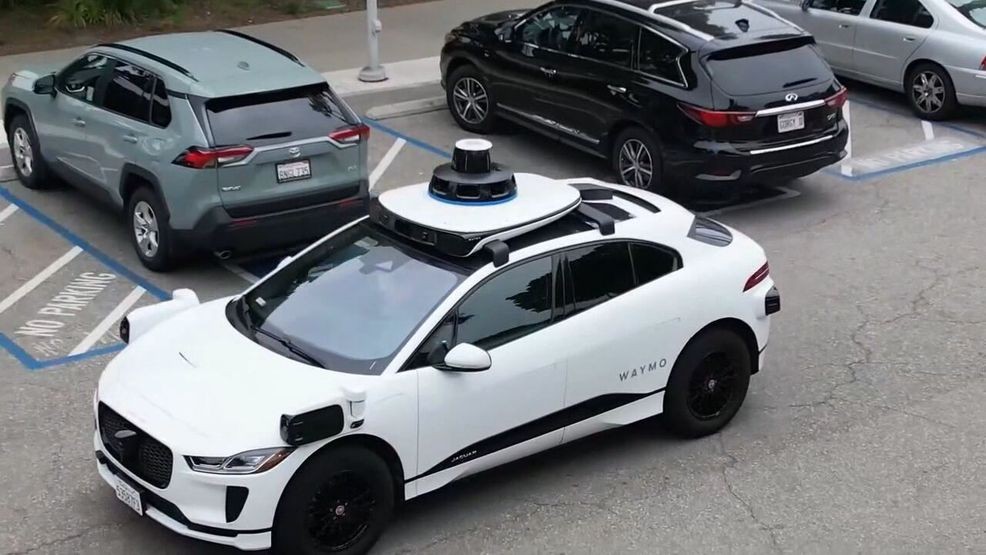You may have seen self-driving cars roll out in other cities, and now, they’re being tested in San Antonio.
Waymo’s autonomous vehicles are being tested on local streets, but with a little help.
Each car still has a human behind the wheel, assisting the technology as it learns how to handle real-life San Antonio traffic.
A Waymo spokesperson says “supervised autonomous testing” right now with a specialist in the driver’s seat to help the cars get familiar with local roads.
The cars are currently collecting data and learning how to navigate safely before going driver-free.
First responders have already started training for this driverless rollout, though no timeline has been publicly released.
San Antonio firefighters and police officers took special courses on how to handle autonomous vehicles in emergencies.
“You grew up watching The Jetsons. We expected flying cars by now,” joked SAFD’s Joe Arrington. “Maybe this is that next step… the autonomous vehicle.”
Arrington says the training helps take the “mystery” out of what to do if one of these cars is involved in a crash or fire.
Safety Concerns Still Loom
Not everyone is ready to embrace the technology.
We asked social media viewers how they felt about getting in an autonomous vehicle and got some mixed reactions.
“I don’t think the technology is 100% there yet,” Michael told us.
Roger told us he’d prefer the technology on rural roads rather than on city streets.
The National Transportation Safety Board (NTSB) is investigating autonomous driving systems nationwide after a deadly crash in San Antonio last year.
In that February 2024 incident, a Ford SUV using BlueCruise — a partially automated driving system — slammed into another vehicle on I-10, killing the other driver. The system was controlling speed and braking, but the human behind the wheel was still supposed to be paying attention.
And in Austin, safety advocates staged a demonstration showing a Tesla in full self-driving mode plowing through a child-sized mannequin in a crosswalk — a reminder that even advanced technology can fail.
The Tech Is Getting Better
Experts say Waymo’s system is among the most advanced currently being tested.
Dr. Song Fu has been studying autonomous vehicles at the University of North Texas for years.
He serves as the director of the NSF Center for Electric, Connected and Autonomous Technologies for Mobility, and the director of the Vehicle and Edge Computing Laboratory.
Fu says Waymo’s technology combines cameras, radar, and light detection sensors to create a more complete picture of the road.
Waymo explains the technology here.
“They can detect objects more accurately and at a longer range, even in bad weather,” said Dr. Fu. “The technology now is much better than it was even a year ago.”
To understand how far this technology has come — and how far it still has to go — the U.S. EPA breaks down six levels of driving automation, from Level 0 (no automation) to Level 5 (fully driverless).
Level 0: No automation — the human controls everything.Level 1: Basic driver assistance — the car can control either steering or speed, but not both.Level 2: Partial automation — the car can manage steering and speed at the same time, but the driver must stay alert and ready to take over.Level 3: Conditional automation — the system can handle driving in some conditions but may need human help in unexpected situations.Level 4: High automation — the car can drive itself in most scenarios and can pull over safely if needed.Level 5: Full automation — no human driver required at all, in any environment or weather.
Most cars on the road today, even those advertised as “self-driving,” only reach Level 2 automation. That means the driver still needs to stay in control.
Waymo’s goal is to advance toward Levels 4 and 5, where the car could handle the entire trip safely on its own.
Still, it’s a strange sight for many.
“It’s weird to see a car driving down the road with nobody driving it,” Arrington said.
What’s Next for San Antonio?
There’s no timeline yet for when you’ll be able to hail a Waymo ride like you would a Lyft or Uber. But when that day comes, city leaders say the service will likely stay within Loop 410 to start.

